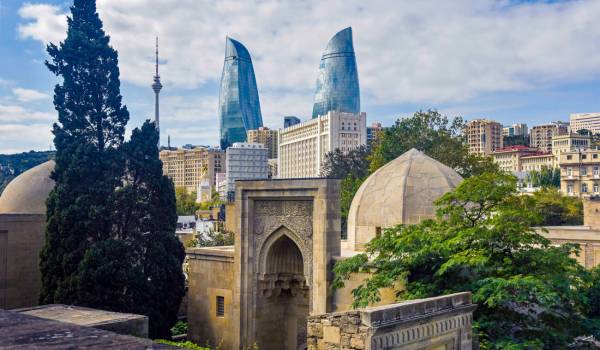
Baku
Lachin has a mysterious beauty and rich natural resources, located in a mountainous area in the southwestern part of Azerbaijan, also has great.
The relief of the Lachin is very beautiful. The south-western slopes of the Karabakh range stretch in the east and the Mikhtoken range stretches in the north.
There is a Lachin reserve with more than 21,000 hectares and the Iligsu mineral spring of medical importance in the area with rich flora and fauna. In addition, there are medicinal springs, and pastures such as Turshsu, Galaderesi, Hirmanlar, Aganus, Tigig, Tursh-tigig, Nagdali, Nureddin, Hajikhanli. In 1961, The Lachin State Nature Reserve was established at 20,000 hectares to protect unique natural complexes in the region, and in 1987, Garagol State Nature Reserve was established at 240 hectares. The reserve consists of 68 species of vegetation, thousands of medicinal plants.
Rare species of fauna such as roe deer, rocky mountain goat, wild boar, bear, partridge, black francolin, blackbird inhabited the reserve. There is red oak (golden oak) trees, which are the most valuable species in the world, in the Hajishamli forest of the reserve. The red oak trees are only spread in The Lachin State Nature Reserve.
Most of the territory of Lachin is covered with forests. The forests were dominated by pine, oak, hornbeam, ash, birch, elm, acacia, poplar, willow, ironwood, and pear trees. On the right bank of the Hakari River and in the village of Zabukh, two 400-year-old Oriental plane trees, juniper, chestnut, and yew trees covering an area of 1,092 hectares on the lands of the state forest fund were protected.
The nature and natural resources of the Lachin region have been plundered for 28 years by 2020. Forests have been logged, specially protected trees have been cut down, natural resources have been looted and transported to Armenia.
Lachin is an area with a rich history. There are about 300 historical, cultural, and architectural monuments. Historical monuments have become the victims of Armenian atrocities. The territory of the Lachin region is mostly made of historical, cultural, and architectural monuments of the Caucasian Albanian period, which is rich in ancient rock and themed stone carvings, caves, mounds, castle-type monuments, temples, numerous tombstones, horse, ram figures, various ornaments, household, and other items from clay, single and double bridges.
Agoghlan temple (IX century), Damrovlu Pir Temple (XI century), Malik Ajdar tomb in Chichimli village (XII century), Kar Kunbez tomb (XVII), Hamza Soltan palace in Soltanlar village (1761), Pir in Gushchu village (XII- XIII centuries), Child's Fortress (XV century), Temple in Shalva village, Fortress in Mirik village (XV century), Garanlig Kaha, Baygara caves, Soltanbaba tomb in Zeyva village, Sultanbud temple in Gulebird village, Albanian church in Minkend village, X-XIX centuries single-arch and double-arch bridges, single-arch bridge in Seyidlar village (19th century), Pirjahan bridge, medieval gravestone chest, ram and horse monuments, Iron and Bronze Age mounds, cemeteries and dozens of other temples have been victims of Armenian savagery for 28 years by 2020. Many historical, cultural, and religious monuments in the Lachin region have been destroyed, and many have been Armenianized by 2020.
The ancient Azerbaijani land of Lachin, occupied by the Armed Forces of the Republic of Armenia in 1992, has been released 28 years of occupation on December 1, 2020, according to a tripartite statement signed by the Presidents of the Republic of Azerbaijan, the Russian Federation, and the Prime Minister of the Republic of Armenia.
The mountainous terrain of the liberated region will give impetus to the development of mountain and winter tourism in the future.